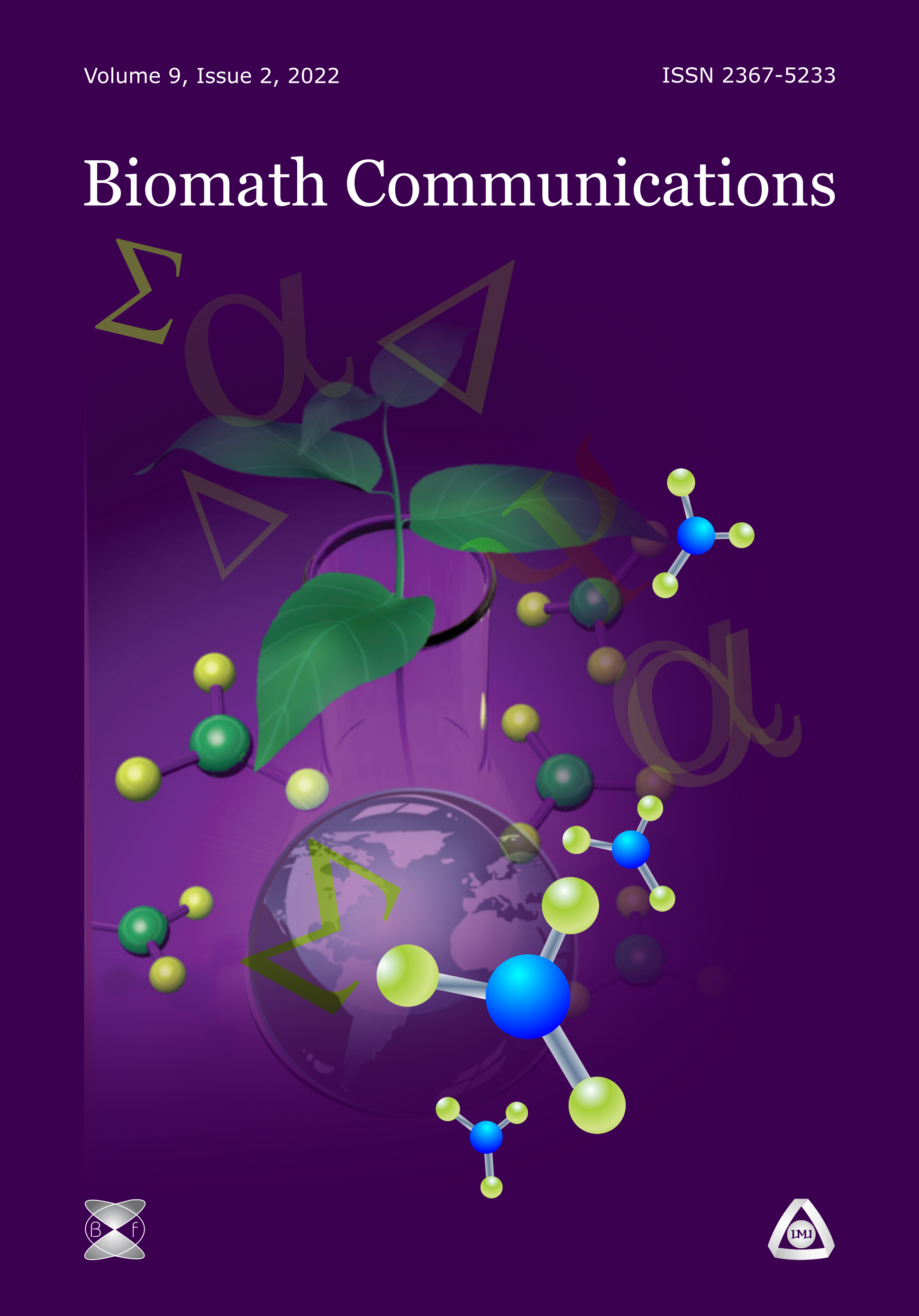Turing Instability of a Chemical System with Reactants Binding to a Substrate
DOI:
https://doi.org/10.11145/166Abstract
Relevance of Turing mechanism for biology has been questioned due to not allowing pattern formation when the diffusion constants of the two reacting chemicals are identical. The idea that binding of the activator to a substrate may effectively reduce its diffusion rate and thus destabilize a system that would otherwise be stable was formulated in an article by Lengyel and Epstein [2], where the authors reduce the original system of three linear partial differential equations to a two-dimensional reaction-diffusion system that they analyse. We question relevance of this analysis due to lack of connection between the original and the reduced model and suggest that analysing the reduced model actually does not yield any possibilities beyond the standard setting. Nevertheless, our analysis of the three dimensional system shows that one can indeed relax the standard conditions on diffusion constants that are necessary for Turing instability, in particular allow identical diffusion coefficients. Another question that we raise is whether one can relax the condition on the effective diffusion rates in the three- or four-dimensional model. This idea is supported by a previous result of Klika, Baker, Headon and Gaffney [1] that one can significantly reduce the necessary conditions for Turing instability by adding more reactants into the system. Furthermore, the approach of studying the full four-dimensional system allows relaxing the kinetic contraints, for example by permitting two activators to generate a pattern.
[1]В V. Klika, R. E. Baker, D. Headon, E. A. Gaffney, The Influence of Receptor-Mediated Interactions on Reaction-Diffusion Mechanisms of Cellular Self-organisation, Bull Math Biol (2012), 74 935--957.
[2]В I. Lengyel, I. R. Epstein, A Chemical Approach to Designing Turing Patterns in Reaction-Diffusion Systems, Proc. Natl. Acad. Sci. USA (1992) 89 3977--3979.
Downloads
Published
Issue
Section
License
The journal Biomath Communications is an open access journal. All published articles are immeditely available online and the respective DOI link activated. All articles can be access for free and no reader registration of any sort is required. No fees are charged to authors for article submission or processing. Online publications are funded through volunteer work, donations and grants.
Authors who publish with this journal agree to the following terms:
- Authors retain copyright and grant the journal right of first publication with the work simultaneously licensed under a Creative Commons Attribution License 4.0 that allows others to share the work with an acknowledgement of the work's authorship and initial publication in this journal.
- Authors are able to enter into separate, additional contractual arrangements for the non-exclusive distribution of the journal's published version of the work (e.g., post it to an institutional repository or publish it in a book), with an acknowledgement of its initial publication in this journal.
- Authors are permitted and encouraged to post their work online (e.g., in institutional repositories or on their website) prior to and during the submission process, as it can lead to productive exchanges, as well as earlier and greater citation of published work (See The Effect of Open Access).

